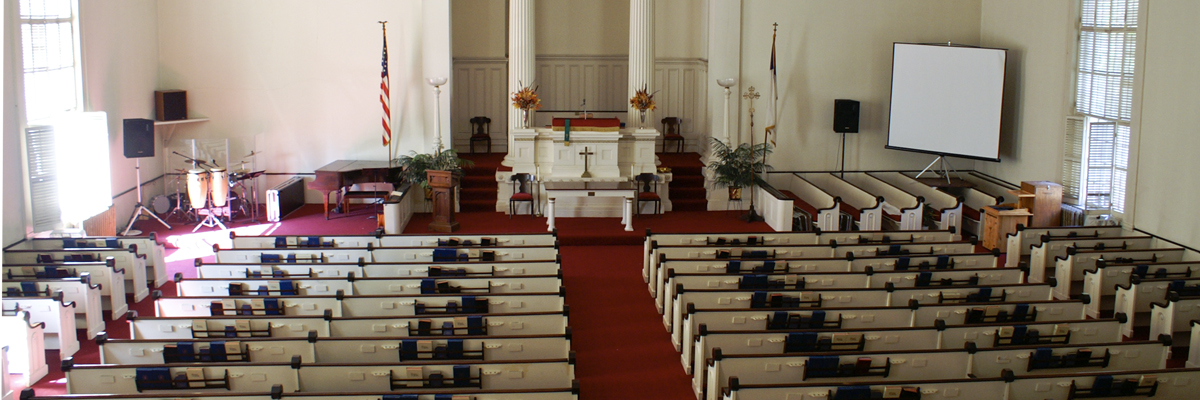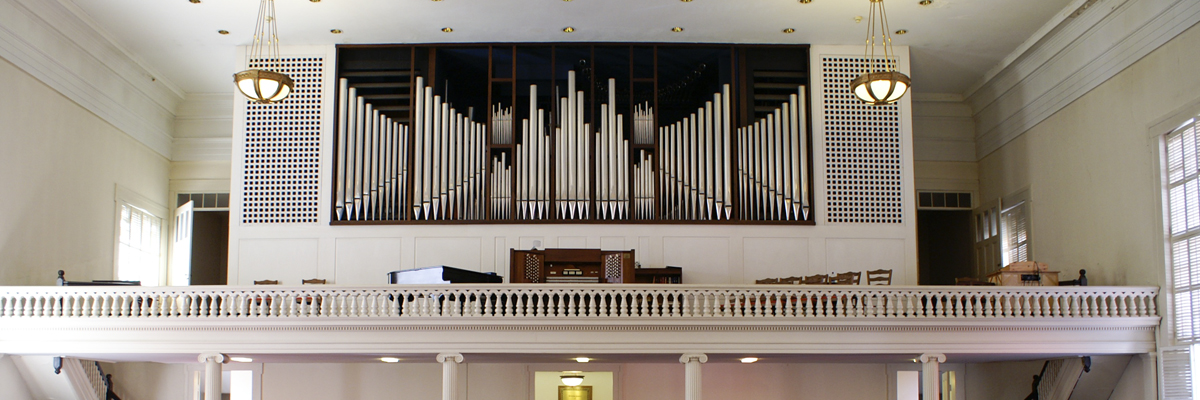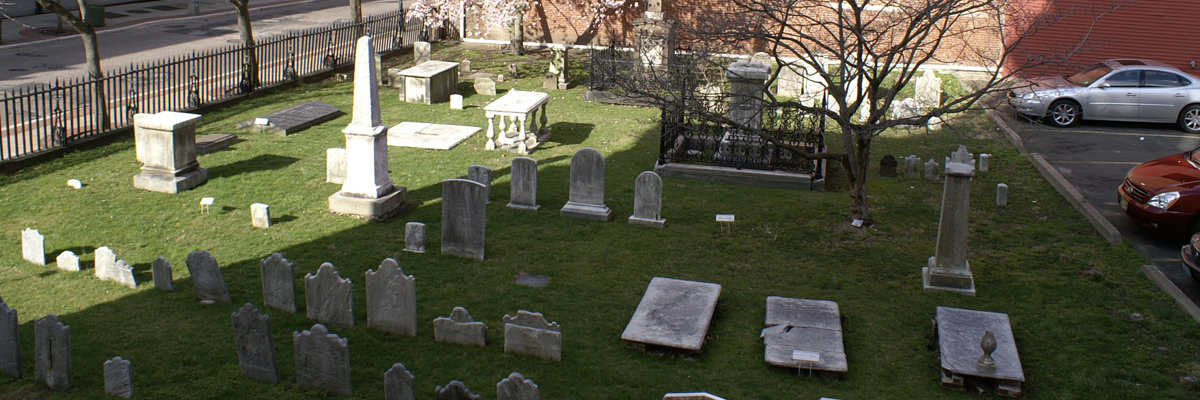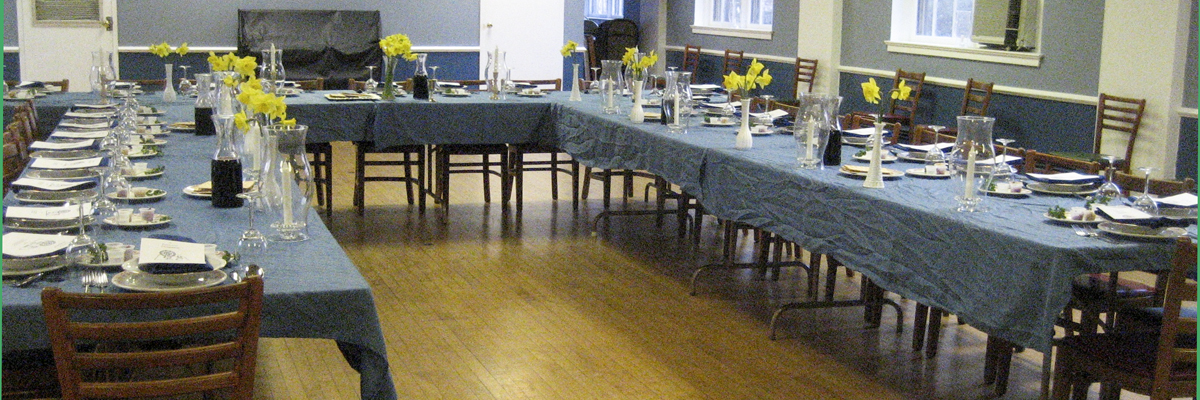Exterior
The church standing today is the third one on the site and is on the New Jersey and National Register of Historic Places. The main building was built in 1839 and Fellowship Hall was added in 1950.
The church is in the Greek Revival style of archtitecture with a pedimented temple front highlighted by two 26-foot fluted Ionic columns made of poured concrete flanked by Doric pilasters.
There is a 120 foot octagonal steeple, the base of which is original to the building. The portion above the cornice was added in 1964 after the original upper portion was damaged by a hurricane in 1955. The steeple contains a bronze bell cast in Philadelphia in 1807 for the second church.

1807 bell
An 1853 wrought iron fence on a stone base encloses the front of the property and the cemetery.
The main entrance to the church is a dramatic Greek Revival door surround framing a pair of wooden double doors topped by two ranges of panels with matching detailing. The lock was reused from the 1806 church.
The west and east elevations of the church feature two stories of four bays each. The windows of the sanctuary on the first story feature triple-hung 24 pane sashes. The basement story has 12 over 12 double-hung sashes.
Sanctuary
The Sanctuary consists of a rectangular nave with a central aisle flanked by wooden pews and side aisles. At the foot of the nave’s main aisle is the original baptismal font of carved white marble. At the head of the main aisle is the communion table below the pulpit in the fashion of historic Presbyterian tradition.
The interior decoration is a repitition of the exterior front of the building featuring two great columns with flanking pilasters. These columns are made of wood and have very ornate capitals of Corinthian design finely carved in wood and covered with gold leaf.
The pulpit is accentuated by contrasting sharp white and gold. An entablature of several feet in width runs around the entire wall of the Sanctuary at the joining of the ceiling and the wall. Over the pulpit, it is interrupted by the introduction of dentils.
In the rear of the Sanctuary is a gallery reached by stairs at each corner. This gallery is supported by four fluted columns of the Ionic style. The Organ is located in the gallery.
The ceiling of the Sanctuary features lighting fixtures that are large glass bowls set in gold leaf pendants. The center of the ceiling vent is covered by an ornamental cover with radiating spokes surrounded by a delicately carved floral pattern all in gold leaf.
The pews date to 1870 and are made of Jersey pine with arms and a strip along the back of highly polished oak. A ceramic shielf plaque identifies the pew number.
History of Construction
In 1836, the congregation of the First Presbyterian Church began considering plans to build a third church on the site. The existing building had been struck by lightning in 1828 and had fallen into disrepair and despite its size as the largest building in Trenton, could no longer accomodate the size of the congregation.
A committee was appointed to raise funds and the existing church was razed in 1838. Church services were held at St. Michael’s Episcopal church. Bids for a new building were solicited by newspaper advertisements in 1839. Architect Horation Nelson Hotchkiss of the New Haven firm of Hotchkiss & Thompson received the contract to design and build the new church. According to John O. Raum’s 1871 History of the City of Trenton, the contract to build the church was signed by Pastor John W. Yeomans, Trenton Mayor Charles Burroughs, New Jersey Governor William Pennington and United States President Martin Van Buren.
The cornerstone of the new church was laid on May 2, 1839. To best use the space the new church was constructed in the center of the lot, which necessitated the movement of a number of tombstones, some of which were used as exterior tiles. Other tombs were left intact under the basement of the church and were discovered during a renovation.
The total cost of the church, which seats 900, was $21,ooo.oo. Part of the cost was subsidized by reusing materials from the first two churches including the base of local sandstone.









